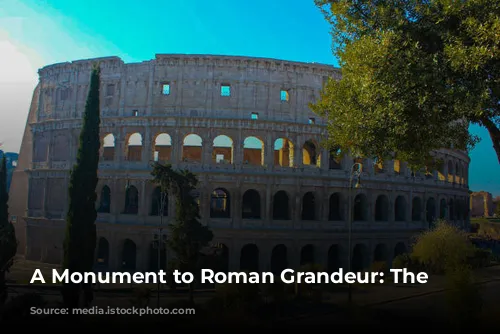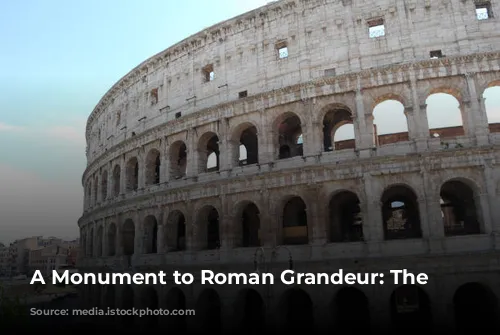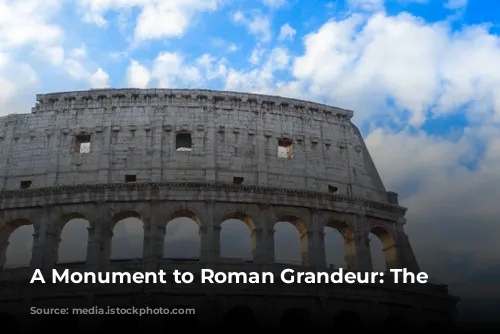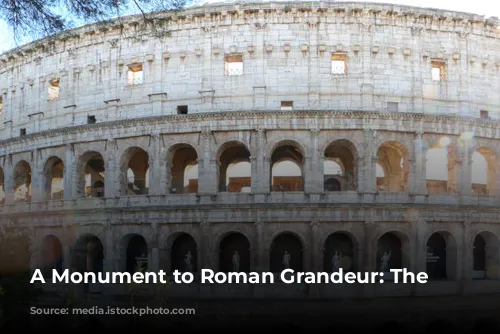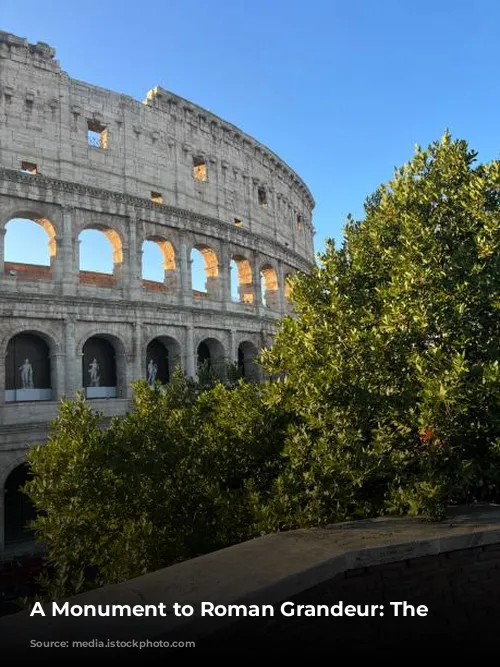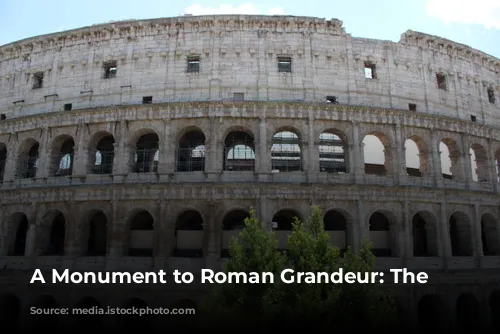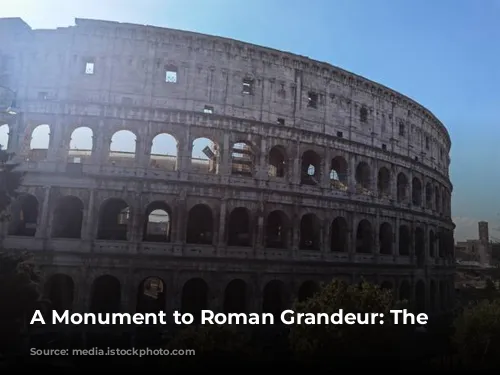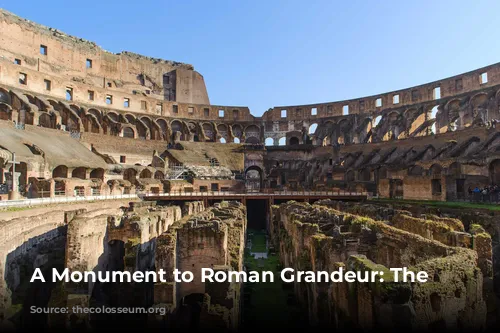The Colosseum stands as a testament to the architectural brilliance and power of ancient Rome. This enormous amphitheater, the largest of its kind in the world, has endured centuries of fires, earthquakes, and human neglect. It remains a captivating symbol of Roman history, a reminder of a bygone era where gladiators battled, wild beasts roamed, and thousands of spectators gathered to witness these spectacles.
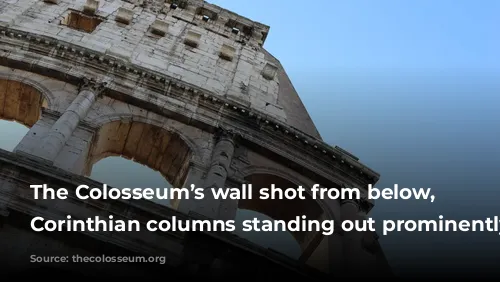
A Monument to Roman Power
The Colosseum was built between 70 AD and 80 AD under the reign of the Flavian emperors: Vespasian, Titus, and Domitian. It was initially known as the Amphitheatrum Flavium, a name that reflected its connection to the ruling dynasty. Vespasian, in particular, commissioned the Colosseum as a way to appease the restless populace after the tumultuous reign of Nero. The construction site, located on the grounds of Nero’s lavish Domus Aurea, symbolized a shift in power from the decadent rule of Nero to a more populist approach by the Flavians.
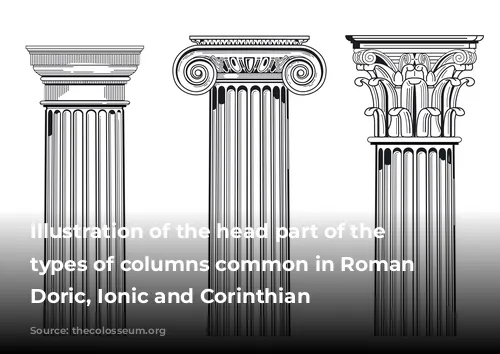
A Symbol of Roman Labor
The Colosseum was built with the labor of thousands of Jewish slaves, captured during the First Jewish-Roman War. Their forced labor helped bring this grand project to life. The Colosseum’s imposing scale and its ability to accommodate over 80,000 spectators are a testament to the immense human effort that went into its creation.
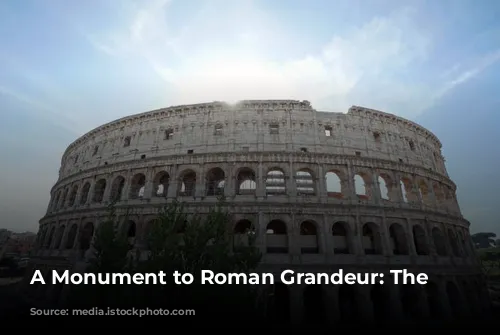
An Architectural Masterpiece
The Colosseum was a testament to the Romans’ architectural prowess. It was a massive oval-shaped structure, measuring approximately twice the length and 1.5 times the width of a modern football field. Constructed from over 100,000 cubic meters of travertine stone, a type of limestone quarried near Tivoli, the Colosseum was a sight to behold. The travertine’s white color contrasted sharply with the red and black stone blocks used for the arena wall, creating a visual impact that mirrored the drama that unfolded within its confines.
The building was a marvel of engineering. Over 300 tons of iron clamps were used to hold the massive stone blocks together. The Colosseum’s three tiers, each featuring a different architectural order – Tuscan, Ionic, and Corinthian – showcased the Romans’ mastery of architectural design.
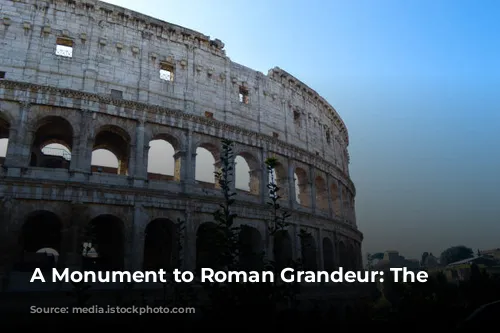
The Arena: A Stage for Spectacle
The Colosseum’s most defining feature was its arena, a 83-meter long and 48-meter wide space where gladiators, criminals, and wild animals fought and met their demise. The arena floor was made of wooden panels covered with sand, offering a soft landing for falling gladiators and a dramatic backdrop for the spectacles that unfolded. Trapdoors concealed within the floor allowed for the dramatic introduction and removal of scenery and animals, adding to the spectacle.
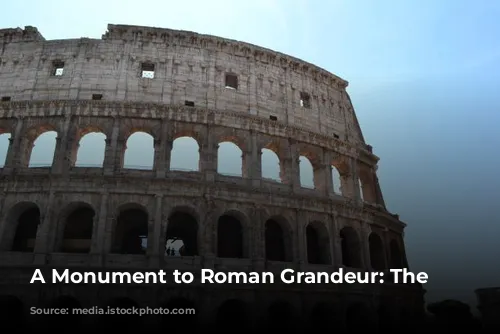
The Cavea: A Seat for Every Social Class
The cavea, the tiered seating area, was divided into three sections: the podium, the gradatio, and the porticus. These sections reflected the rigid social hierarchy of ancient Roman society. The closest seats to the arena, the podium, were reserved for the elite, including senators and high-ranking officials. As you climbed higher, you encountered individuals of lower social standing, with the top tier accommodating the poorest Roman citizens.
The cavea was a carefully designed system, with stairways and vomitoria providing access to the stands. The vomitoria, contrary to popular belief, were not spaces for vomiting; they were simply passages designed to efficiently funnel spectators into and out of the Colosseum.
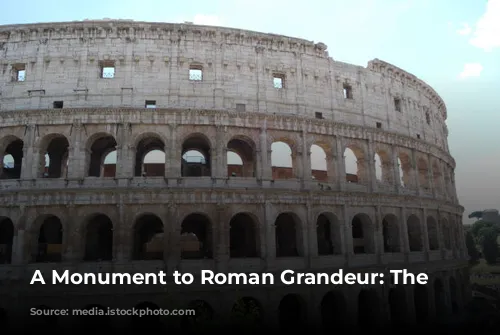
The Hypogeum: A World Beneath the Arena
The Colosseum’s hypogeum, an elaborate network of tunnels and chambers beneath the arena, was not part of the original design. Emperor Domitian, the successor to Vespasian and Titus, added this subterranean complex after the building was inaugurated. It was a labyrinthine world where gladiators and animals were kept before their dramatic entry into the arena.
The hypogeum connected to the arena above through 80 vertical shafts, allowing for the swift appearance of gladiators and animals. The hypogeum also featured hegmata, large moving platforms that were used to transport massive animals, such as elephants, up to the arena. This intricate system of tunnels, shafts, and hegmata transformed the Colosseum into a complex stage, allowing for elaborate and surprising entrances and exits.
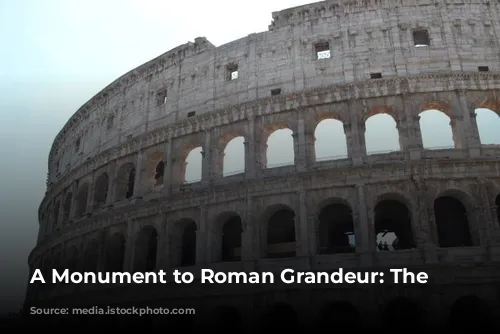
A Lasting Legacy
The Colosseum, a symbol of Roman power, grandeur, and entertainment, has endured centuries. Although it is no longer the stage for gladiatorial combat, its grandeur and its ability to transport us back to a bygone era continue to captivate visitors from around the world. It serves as a reminder of the incredible achievements of Roman civilization and its enduring influence on the world.
